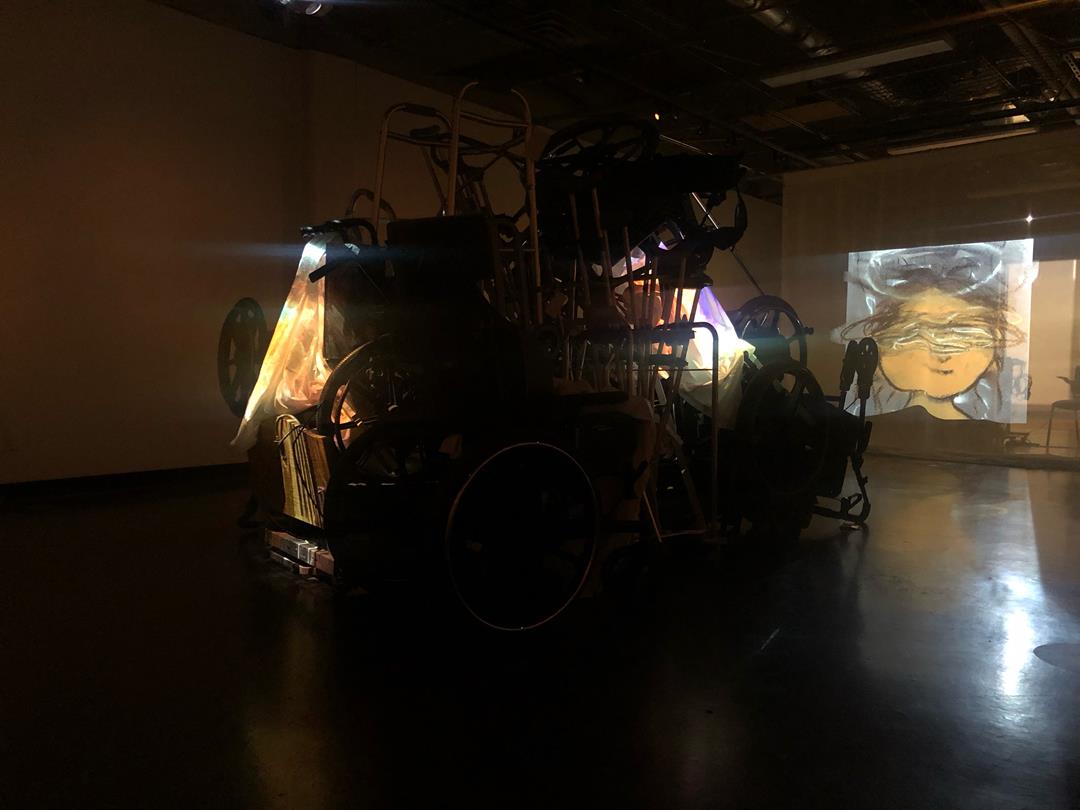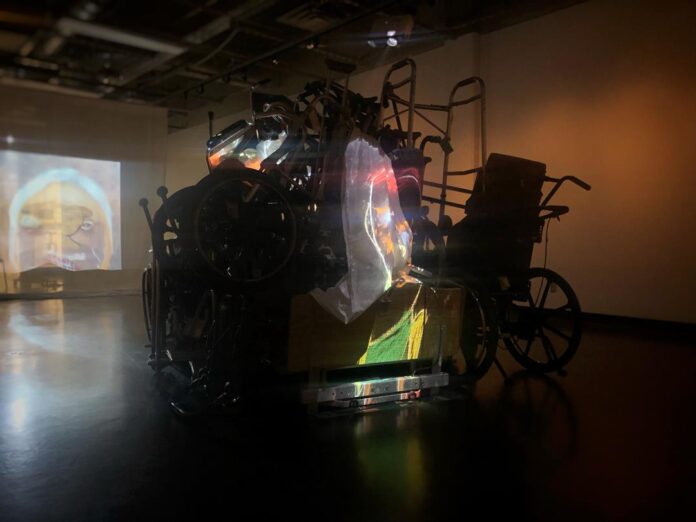Throughout October until early November, UFV’s newest art exhibit, Projections, navigates the social perceptions enforced onto people who live with dementia.
Candace Couse is an assistant professor of Visual Arts in UFV’s School of Creative Arts (SoCA). Couse shared with The Cascade via email, “I am an artist engrossed in pathography — a word that combines pathology and biology. I am interested in autobiographical illness narratives. I study these expressions, particularly in the ways they are taken up in visual art practice. I believe pathographies can tell us many things about the state of medicine as a practice and institution, cultural perceptions about health and wellness, and our complex, socially coded beliefs about illness and death.”
With a wide variety of contributors who made the project possible, Couse stated that, Projections is a creative research project that has unfolded in the context of an initiative spearheaded by Dr. Shelley Canning titled Understanding Student Attitudes to Support Education Promoting Ageing & Dementia Awareness.
“This broader project, undertaken through UFV’s Centre for Education on Research and Aging (CERA), folded in me, educator Elise St-Martin (School District #34), researchers Darren Blakeborough (UFV), and Joanne Brown (UFV), research assistants Zaira Ramirez Luis (Visual Arts), Rosaley Klassen (Nursing), and Nicole Cusick (Nursing).”
Couse described how the project formed largely as a response to the layers of discrimination that people living with dementia have experienced. It started as they asked the question, “What perceptions do children have and when do they develop them? Our work operated under the premise that stigma related to aging and dementia begins early, as children are influenced by familial, cultural, and broader societal beliefs and values.”
“For this research, we partnered with public elementary schools located on the territory of the Stó:lo? people, the Semá:th and Mathxwí First Nation to conduct our study. In the process, we gathered hundreds of drawings, writings and musings from our student participants. The project has many arms, and one included developing educational resources to intervene in the classroom as these ideas are first being formed. Another arm, the exhibition Projections, comes from our desire to take our rich data and translate it through the language of contemporary visual art so that we could reach the public along the horizon of an event where ideas could be critically analyzed and turned over in real-time.”

Projections can be viewed at the S’eliyemetaxwtexw Gallery, Room B136, from 12:00 – 5:00 p.m. on the Abbotsford campus. The exhibit features illustrations done by various school children, projected onto a screen alongside specific audio recordings. Couse described the experience: “Upon entry, the viewer is greeted by the first projection, cast against a transparent screen. Here, the images coalesce in a fragmented and choppy animation — a collaboration between the student artists, a pinch of myself, and overwhelmingly the creative virtuosity of research assistant and recent UFV graduate Zaira Ramirez Luis (Visual Arts).”
“The fragmented video slices across several drawn portraits in a way that echoes the musings caught by the nearby audio recording which speak — often at once — of memory, crumbling reality, and moments of joy. This recording was deftly and lovingly assembled by UFV’s Darren Blakeborough (School of Culture, Media, and Society).”
Giving testament to the creative brilliance of UFV’s alumni and faculty members, Projections remains a beautiful collaborative piece illustrating the cultural impressions of those living with dementia, and how the younger generation of students might perceive it.
“Art is an interesting thing because it requires an aesthetic relationship to space and [an] event that [boosts] up your critical reflection of the world,” Couse ended off in the email. “The show invites you in to activate your own role in meaning-making around the questions it poses, and in doing so, it also implicates you in the web of social perceptions around dementia and aging.”


